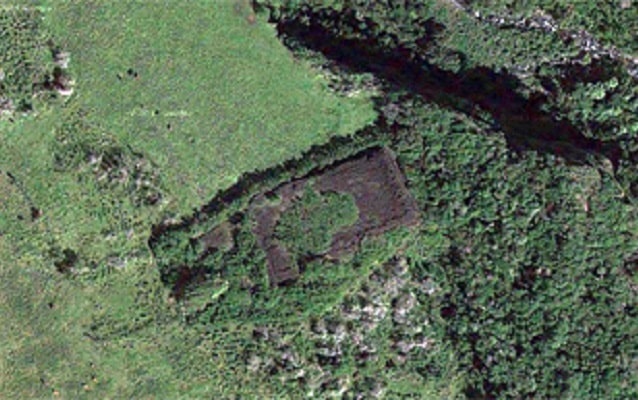Last updated: August 15, 2019
Place
Loaloa Heiau

Aerial view of Loaloa Heiau on the fields above the lower end of Manawainui Valley
Loaloa Heiau is located in Kaupo, Hawaii, on the Island of Maui. The heiau (place of worship) overlooks the rural community of Kaupo and the Pacific Ocean to the south and the Manawainui Valley to the north. It is the largest and best preserved luakini heiau on the island.
Early Hawaiian shrines were simple and constructed by families and small communities. With population growth and changes in religion, social organizations became more complex and large heiau were constructed for public ceremonies. In general, the ali'i (chiefs) worshiped four major gods in these ceremonies: Lono (peace, agriculture, fertility), Kane(the creator and ancestral deities), Kanaloa (the ocean, healing and general well-being), and Ku (war). Commoners worshipped individual family gods at private family shrines and worshipped the four major gods under the direction of high priests.
Ancient Hawaiians had many types of heiau, each with their own distinct function and use by particular segments of society. Heiau ranged in size from a single upright stone to massive and complex structures. Larger heiau were built by ali'i, but the largest and most complex, the luakini heiau, could only be constructed and dedicated by an ali'i 'ai moku (paramount chief of an independent chiefdom or island). Luakiniheiau were reserved for rituals involving human or animal sacrifice and highlighted the ali'i 'ai moku's spiritual, economic, political, and social control over his lands and his authority over the life and death of his people.
The Kaupo area was once the center of an important religious and cultural complex on the Island of Maui. There are three surviving heiau from the 18th century at Kaupo, with Loaloa Heiau being the largest. According to oral tradition, Loaloa Heiau was constructed around the year 1730 for ali'i 'ai moku Kekaulike, ruler of the Island of Maui, as a luakini heiau. Loaloa Heiau is in the shape of a three-tiered rectangular raised platform, situated around a small hill or rock outcropping. The heiau has two major divisions, one to the east and one to the west, separated by a stone wall. The east end of the structure has been built up to a height of nearly 20 feet in some places, and the overall dimensions of the heiau are 115 feet by 500 feet. Because of the extreme height and the lack of mortar, the outer walls are terraced in three or four steps, adding stability to the structure.
In 1802, Kamehameha I, who was en route from the Island of Hawai'i with his fleet of war canoes to invade the Island of Kauai, stopped at Maui and rebuilt Loaloa Heiau, dedicating it to Ku. Following Kamehameha I's unification of the Hawaiian Island, the power of Maui's ali'i 'ai moku and religious centers such as Kaupo, began to decline. In 1819, Kamehameha's son and successor, Liholiho, ended kapu, the Hawaiian system of religious, political, and social laws that governed every aspect of daily life. This led to the destruction and abandonment of many of the heiau across the Islands and brought to an end much of the Hawaiian religious system. Most of the heiau on the islands were abandoned and many became ruins.
